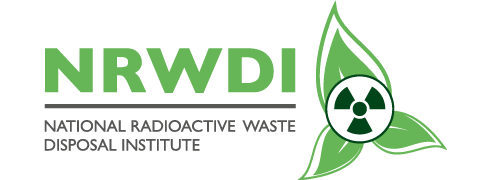For Immediate Release – Vaalputs community.
The National Radioactive Waste Disposal Institute (NRWDI) is a statutory body established in terms of Section 3 of the National Radioactive Waste Disposal Institute Act, 2008 (Act No. 53 of 2008) (NRWDIA), with a mandate to manage radioactive waste disposal on a national basis.
One of the key functions of NRWDI is to investigate the need for any new radioactive waste disposal facilities and site, design and construct such new facilities as may be required. Currently NRWDI is investigating the establishment of an off-site above ground storage facility for spent fuel (also known as Centralised Interim Storage Facility (“CISF”), as informed by the Radioactive Waste Management Policy and Strategy for the Republic of South Africa of 2005.
In order to establish any new disposal and related storage facility, NRWDI is obliged to comply with all the applicable legislative and regulatory requirements. This includes, but is not limited to obtaining an Environmental Authorisation from the Department of Forestry, Fisheries and Environment, as well as a Nuclear Installation Licence from the National Nuclear Regulator.
“We are mindful of the importance of public consultation in this process and would therefore like to assure all stakeholders that NWRDI will comply with all the requirements of the NNR and NEMA Acts, in terms of public participation,” stated Dr Margaret Mkhosi, CEO of NWRDI.
The regulation that governs the Public Safety Information Forum (“PSIF”) clearly states that the holder of a nuclear installation licence (Necsa is currently the Licence Holder of Vaalputs) must provide on a quarterly basis information to persons living in the relevant municipal area (in the instance of Vaalputs, within the Kamiesberg Municipality), in respect of which an emergency plan has been established on nuclear and radiation safety matters, including but not limited to nuclear incidents and accidents. The PSIF meetings are also attended by persons living in the Richtersveld Municipality and the Nama Khoi Municipality, and any member of the public.
The physical in-person Vaalputs Public Safety Information Forum (VPSIF) meetings have been cancelled by the current Licence Holder for the past two years, as a safety precautionary measure in the interest of the public and the communities in the area, in lieu of the potential spread of the COVID virus.
The option of conducting virtual VPSIF meetings was explored, but due to the remoteness and the limited or non-existent Wi-Fi connectivity in the area, this option was not deemed feasible and viable, as many of the communities surrounding Vaalputs would not be able to participate in such virtual VPSIF meetings. Thus, the diversity and inclusivity of stakeholders would have been severely compromised and furthermore, putting an undue financial burden on stakeholders that would normally attend the physical in-person PSIF meetings.
Notwithstanding the cancellation of the physical in-person PSIF meetings, NRWDI (as future Nuclear Installation Licence Holder for Vaalputs) has acted in the spirit of the PSIF regulation, by providing on a quarterly basis, information with regard to nuclear and radiation safety to our stakeholders.
“NRWDI remains committed to deliver technically sound, socially acceptable, environmentally responsible, economically feasible, sustainable and publicly acceptable solutions for the long-term management and disposal of all radioactive waste classes on a national basis. This will be done in a safe and secure manner that protects people and the environment” emphasized Dr Mkhosi.

